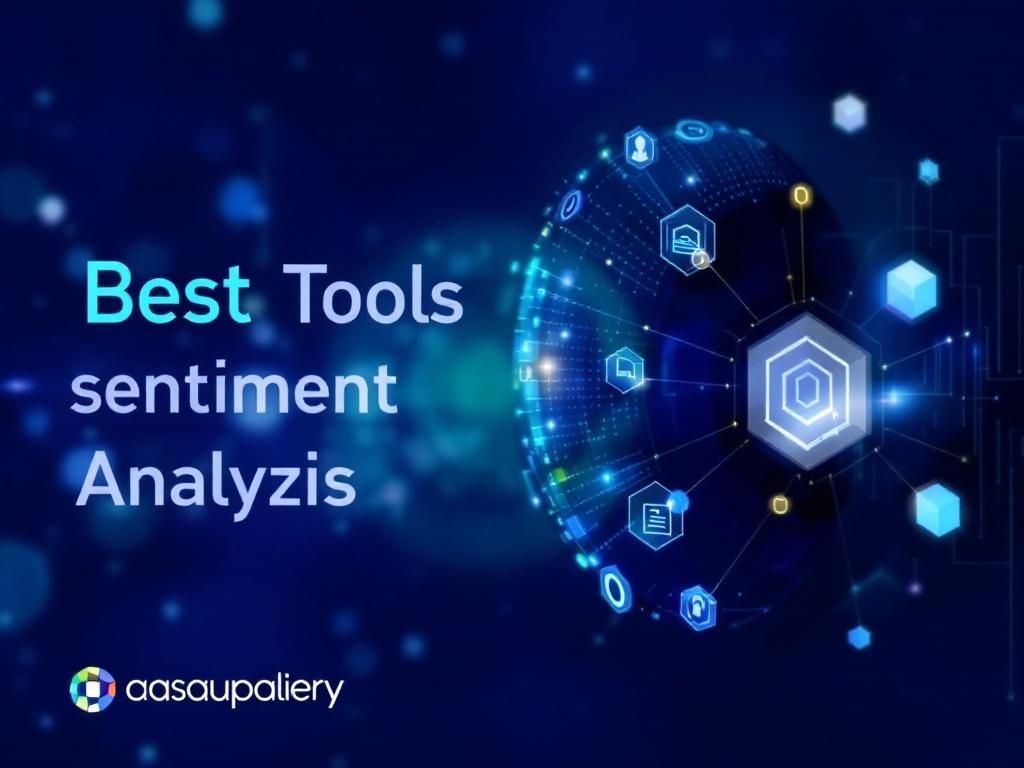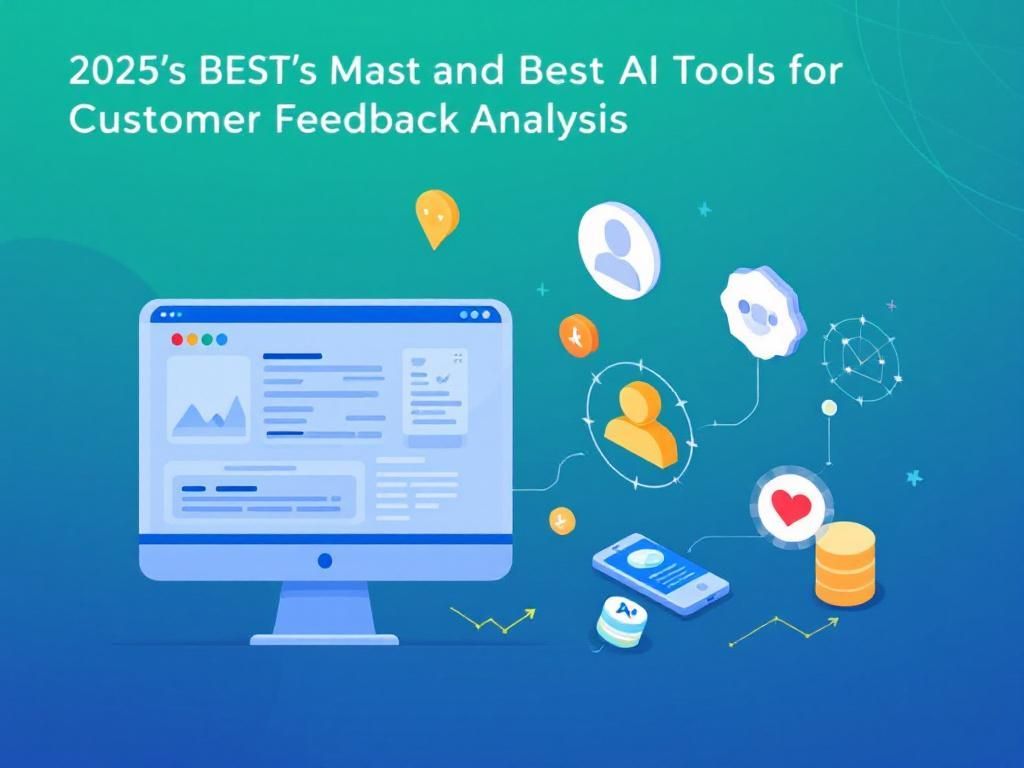As we delve into the digital landscape of 2025, the importance of sentiment analysis in understanding consumer emotions and opinions has never been more critical. Businesses are increasingly relying on advanced AI tools to parse through vast amounts of textual data, from social media posts to customer reviews, in order to gauge sentiment. This evolving technology enhances decision-making, marketing strategies, and customer engagement. In this article, we will explore the leading AI tools for sentiment analysis in 2025, examining their features, benefits, and ideal use cases.
Understanding Sentiment Analysis
Sentiment analysis, also known as opinion mining, refers to the use of natural language processing (NLP) to determine the emotional tone behind words. It involves classifying the sentiment of a piece of text as positive, negative, or neutral. The applications of sentiment analysis are vast, including:
- Brand management
- Customer feedback assessment
- Market research
- Political opinion tracking
- Social media monitoring
Key Features of Top Sentiment Analysis Tools
When evaluating sentiment analysis tools, several key features should be considered:
- Natural Language Processing: The ability to understand context, sarcasm, and idiomatic expressions.
- Multi-language Support: Handling multiple languages effectively increases accessibility in global markets.
- Real-time Analytics: Providing instantaneous sentiment analysis for timely decision-making.
- Integration Capabilities: Seamless integration with existing software systems and APIs.
- Customizable Dashboards: User-friendly interfaces that allow for personalized data visualization.
Top AI Tools for Sentiment Analysis in 2025
1. Lexalytics
Lexalytics offers a robust sentiment analysis tool that excels in processing large volumes of data in real time. It provides powerful sentiment scoring and can analyze social media, customer feedback, and more.
Features:
- Contextual analysis with sentiment scoring
- Multi-language capabilities
- Custom dictionaries for industry-specific terms
Use Cases:
Ideal for businesses looking to enhance brand perception and monitor public sentiment around product launches.
2. MonkeyLearn
MonkeyLearn is known for its user-friendly interface and customizable models that allow users to create tailored sentiment analysis algorithms without extensive programming knowledge.
Features:
- Drag-and-drop interface
- Customizable sentiment classifiers
- Integration with popular platforms like Zapier and Google Sheets
Use Cases:
Best suited for small to medium-sized businesses seeking cost-effective sentiment analysis solutions.
3. IBM Watson Natural Language Understanding
IBM’s Watson Natural Language Understanding offers advanced sentiment analysis along with emotion analysis, keyword extraction, and more. Its capabilities are powered by machine learning and AI.
Features:
- Comprehensive NLP capabilities
- Emotion analysis (joy, fear, anger, etc.)
- Entity and keyword extraction
Use Cases:
Ideal for enterprises that require deep insights into customer sentiment and emotions.
4. Google Cloud Natural Language API
This API from Google provides sentiment analysis as part of a broader suite of language processing tools. It integrates seamlessly with other Google services.
Features:
- Powered by Google’s machine learning algorithms
- Real-time processing
- Support for multiple languages
Use Cases:
Great for organizations already using Google Cloud services that wish to enhance their text analysis capabilities.
5. Aylien
Aylien is an innovative tool that combines text analysis with machine learning. It excels in extracting insights from news articles, blogs, and social media.
Features:
- News and content aggregation
- Sentiment analysis with trend tracking
- Customizable API for developers
Use Cases:
Best for media companies and marketing agencies looking to track sentiment trends in real-time.
Emerging Trends in Sentiment Analysis
As technology evolves, new trends are shaping the future of sentiment analysis:
1. Enhanced Emotion Detection
With advancements in AI, tools are moving beyond basic sentiment classification to identify complex emotions such as surprise, disgust, and anticipation.
2. Voice Sentiment Analysis
As voice-activated devices grow in popularity, analyzing sentiment from voice data presents a new frontier for businesses.
3. Integration with Other AI Technologies
Sentiment analysis tools are increasingly being integrated with AI-driven chatbots and customer relationship management (CRM) systems to provide holistic customer insights.
Choosing the Right Sentiment Analysis Tool
When selecting a sentiment analysis tool, consider the following factors:
| Factor | Considerations |
|---|---|
| Business Size | Larger organizations may need more advanced tools, while smaller ones might prefer user-friendly, cost-effective solutions. |
| Volume of Data | High-volume data environments necessitate tools capable of real-time processing. |
| Integration Needs | Tools should seamlessly integrate with your existing systems to avoid disruption. |
The Future of Sentiment Analysis
As we move forward, the role of sentiment analysis in shaping business strategies will continue to grow. With advancements in AI and machine learning, we can expect tools to become more accurate and intuitive, allowing businesses to respond proactively to consumer sentiments. Embracing these technologies will not only enhance customer satisfaction but also drive business success in an increasingly competitive landscape.
FAQ
What are the best AI tools for sentiment analysis in 2025?
Some of the top AI tools for sentiment analysis in 2025 include IBM Watson Natural Language Understanding, Google Cloud Natural Language API, and Microsoft Azure Text Analytics.
How does sentiment analysis work using AI tools?
Sentiment analysis works by using natural language processing (NLP) and machine learning algorithms to analyze text data, determining whether the sentiment is positive, negative, or neutral.
What industries can benefit from AI sentiment analysis tools?
Various industries, including marketing, finance, healthcare, and customer service, can benefit from AI sentiment analysis tools to gain insights into customer opinions and improve decision-making.
Can AI sentiment analysis tools interpret sarcasm and irony?
While many advanced AI sentiment analysis tools are improving in understanding context, detecting sarcasm and irony remains a challenge and may not always be accurately interpreted.
How can businesses implement AI sentiment analysis tools?
Businesses can implement AI sentiment analysis tools by integrating them into their existing customer feedback systems, social media monitoring, and market research platforms.
What are the limitations of AI tools for sentiment analysis?
Limitations of AI tools for sentiment analysis include difficulties in understanding context, cultural nuances, and the potential for bias in training data.



